Related Research Articles
Fractional calculus is a branch of mathematical analysis that studies the several different possibilities of defining real number powers or complex number powers of the differentiation operator
In mathematics, the Fredholm integral equation is an integral equation whose solution gives rise to Fredholm theory, the study of Fredholm kernels and Fredholm operators. The integral equation was studied by Ivar Fredholm. A useful method to solve such equations, the Adomian decomposition method, is due to George Adomian.
In mathematics, an integral transform is a type of transform that maps a function from its original function space into another function space via integration, where some of the properties of the original function might be more easily characterized and manipulated than in the original function space. The transformed function can generally be mapped back to the original function space using the inverse transform.
In mathematics, integral equations are equations in which an unknown function appears under an integral sign. In mathematical notation, integral equations may thus be expressed as being of the form:

Lars Valter Hörmander was a Swedish mathematician who has been called "the foremost contributor to the modern theory of linear partial differential equations". Hörmander was awarded the Fields Medal in 1962 and the Wolf Prize in 1988. In 2006 he was awarded the Steele Prize for Mathematical Exposition for his four-volume textbook Analysis of Linear Partial Differential Operators, which is considered a foundational work on the subject.
In functional analysis, a branch of mathematics, a compact operator is a linear operator , where are normed vector spaces, with the property that maps bounded subsets of to relatively compact subsets of . Such an operator is necessarily a bounded operator, and so continuous. Some authors require that are Banach, but the definition can be extended to more general spaces.

Alberto Pedro Calderón was an Argentinian mathematician. His name is associated with the University of Buenos Aires, but first and foremost with the University of Chicago, where Calderón and his mentor, the analyst Antoni Zygmund, developed the theory of singular integral operators. This created the "Chicago School of (hard) Analysis".
In gauge theory, especially in non-abelian gauge theories, global problems at gauge fixing are often encountered. Gauge fixing means choosing a representative from each gauge orbit, that is, choosing a section of a fiber bundle. The space of representatives is a submanifold and represents the gauge fixing condition. Ideally, every gauge orbit will intersect this submanifold once and only once. Unfortunately, this is often impossible globally for non-abelian gauge theories because of topological obstructions and the best that can be done is make this condition true locally. A gauge fixing submanifold may not intersect a gauge orbit at all or it may intersect it more than once. The difficulty arises because the gauge fixing condition is usually specified as a differential equation of some sort, e.g. that a divergence vanish. The solutions to this equation may end up specifying multiple sections, or perhaps none at all. This is called a Gribov ambiguity.
Harry Dym is a mathematician at the Weizmann Institute of Science, Israel. Dym's research interests include operator theory, interpolation theory, and inverse problems.
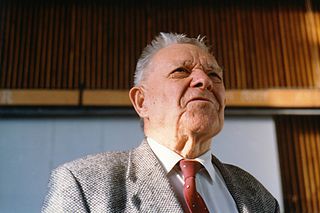
Sergey Mikhailovich Nikolsky was a Soviet and Russian mathematician.

The Institute of Mathematics of National Academy of Sciences of Armenia is owned and operated by the Armenian Academy of Sciences, located in Yerevan.
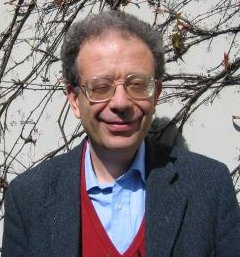
Jean-Michel Bismut is a French mathematician who has been a professor at the Université Paris-Sud since 1981. His mathematical career covers two apparently different branches of mathematics: probability theory and differential geometry. Ideas from probability play an important role in his works on geometry.

Harold Widom was an American mathematician best known for his contributions to operator theory and random matrices. He was appointed to the Department of Mathematics at the University of California, Santa Cruz in 1968 and became professor emeritus in 1994.

Israel Gohberg was a Bessarabian-born Soviet and Israeli mathematician, most known for his work in operator theory and functional analysis, in particular linear operators and integral equations.

Solomon Grigor'evich Mikhlin was a Soviet mathematician of who worked in the fields of linear elasticity, singular integrals and numerical analysis: he is best known for the introduction of the symbol of a singular integral operator, which eventually led to the foundation and development of the theory of pseudodifferential operators.
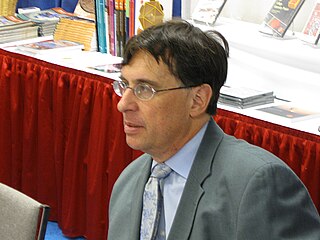
Steven George Krantz is an American scholar, mathematician, and writer. He has authored more than 350 research papers and published more than 150 books. Additionally, Krantz has edited journals such as the Notices of the American Mathematical Society and The Journal of Geometric Analysis.
Marinus Adriaan "Rien" Kaashoek is a Dutch mathematician, and Emeritus Professor Analysis and Operator Theory at the Vrije Universiteit in Amsterdam.
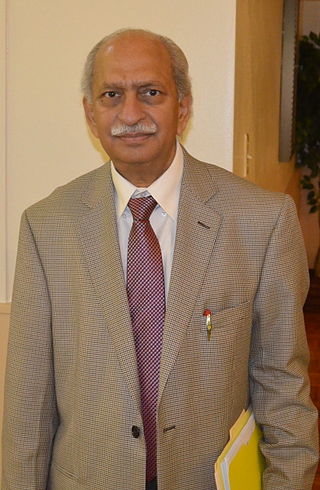
Ravi P. Agarwal is an Indian mathematician, Ph.D. sciences, professor, professor & chairman, Department of Mathematics Texas A&M University-Kingsville, Kingsville, U.S. Agarwal is the author of over 1000 scientific papers as well as 30 monographs. He was previously a professor in the Department of Mathematical Sciences at Florida Institute of Technology.
Majid Latif Rasulov was a Soviet and Azerbaijani mathematician, academician (1983), physics-mathematics PhD (1960).
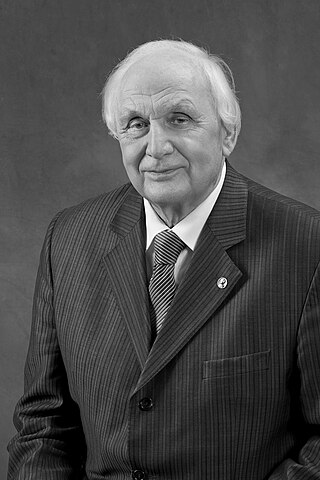
Vladimir Aleksandrovich Ilyin was a Soviet and Russian mathematician, Professor at Moscow State University, Doctor of Science, Academician of the Russian Academy of Sciences who made significant contributions to the theory of differential equations, the spectral theory of differential operators, and mathematical modeling.
References
- ↑ Editorial board, retrieved 2020-02-27